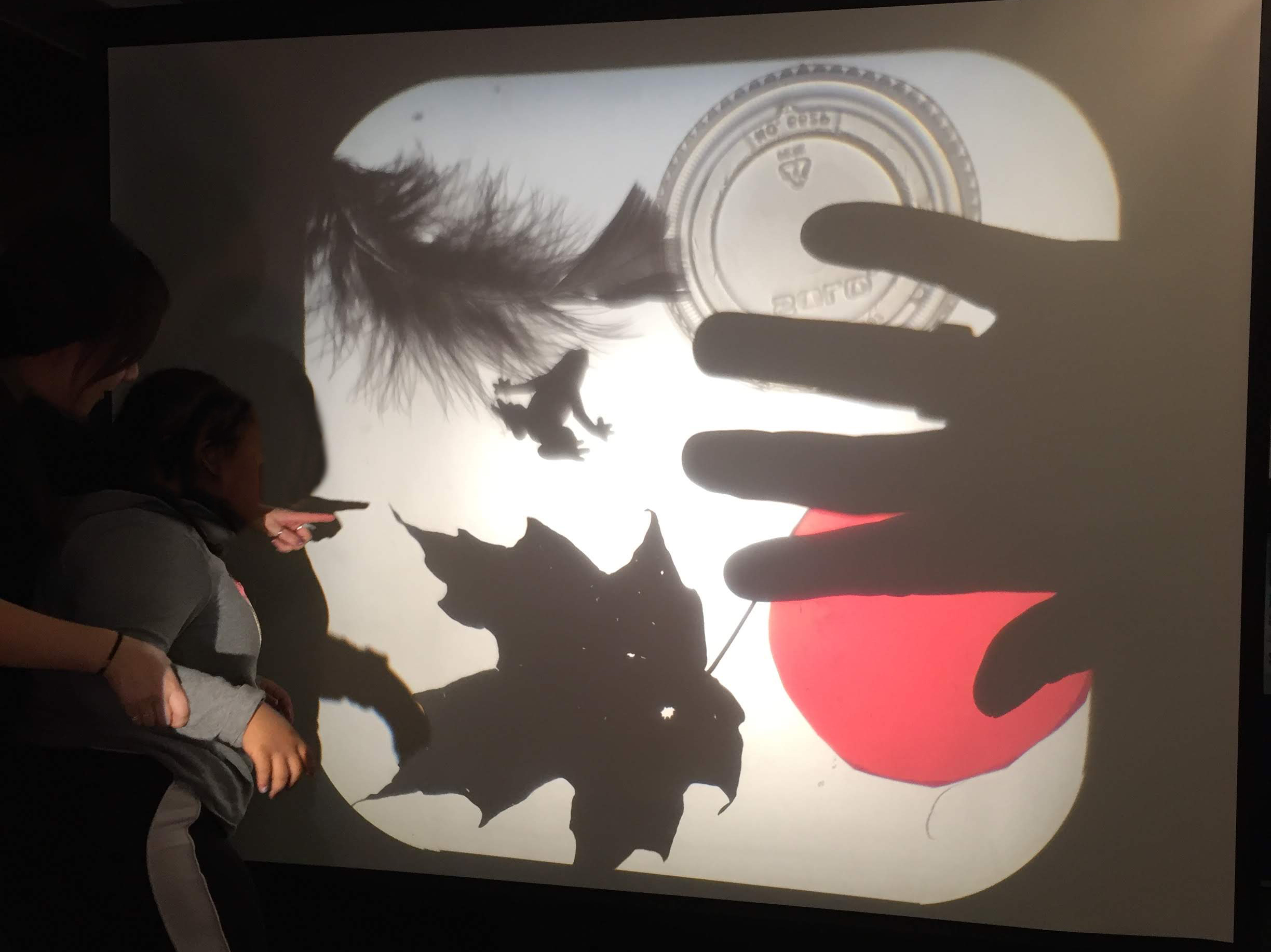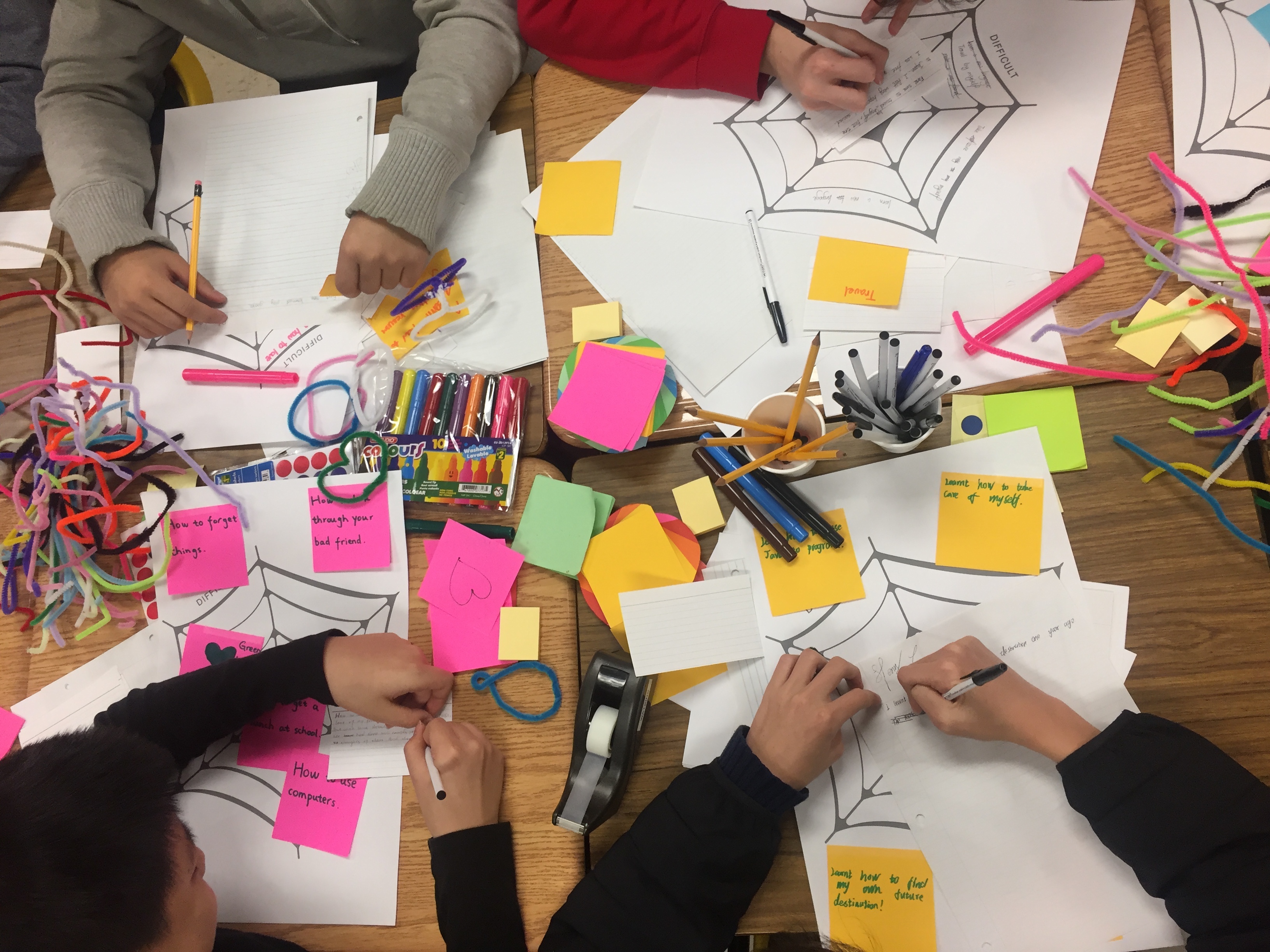Facilitation for Creativity
Guide for Facilitation
About this guide
This guide aims to provide a basic overview of what creative facilitation is and some tips on how to do it.
The goal of creative facilitation is to inspire creative thinking and idea generation, and to help make the co-design session more inclusive. It can compliment and build on foundational facilitation skills that are more commonly used in teaching a workshop or running a meeting, such as:
- Following an agreed upon agenda
- Assisting a group to brainstorm and problem solve
- Making sure to document discussions, outcomes, to-do’s, and questions
- Observing and understanding group dynamics in ways that can address inequalities, and engaging those who are quiet or not engaging
- Listening deeply and supporting the group discussion by repeating and summarizing what people have said. Listening for agreements and disagreements.
In addition to these important foundational skills, creative facilitation skills might include:
- Approaches that evoke and inspire greater creativity from within the group
- Providing a variety of ways for participants to take part, based on how they prefer to express themselves
- Helping participants to take part even if they don’t consider themselves to be creative
- Helping participants to more deeply explore the question, needs or issue being addressed
- Supporting collaboration between participants.

Using creative materials and processes in your co-design can inspire creative thinking.
Practices
Evoke and inspire creativity from within the group
Create a flexible space
- Arrange the space to be as open as possible, with furniture that can be moved around easily. This lets people create different groups and arrange the space to suit their needs
Use playful materials
- Encourage participants to be more experimental by providing playful materials. These materials can be inexpensive and can be whatever you might have on hand, including pipe cleaners, plasticine, lego, colourful makers, etc.
Try a creative icebreaker
- Start your session with an icebreaker that encourages participants to creatively express themselves, work together, and be open to experimenting. This can prepare co-designers to be more creative and take more risks during the activities.
Provide inspiration
- Recap and discuss any previous work done on the issue
- Provide a video or audio clip of interviews with community members, expressing what the challenges are
- Show different ways people have solved similar issues in the past with simple and novel solutions
- Hold your co-design session in an unusual situation, such as outdoors in a park, or in an art gallery.
Allow for a diversity of expression
Not everyone likes to draw. You can let people express themselves in other ways, like:
- Write a list of features
- Share a story orally or describe the idea out oud
- Assemble 3D elements (blocks, lego, etc)
- Write a tv scene
- Create a zine
- Act it out
Provide creative materials for people to choose their preferred way of expressing themselves
Encourage those who don’t consider themselves to be creative
Many people think that they are not creative, or that they are “bad at drawing”. This can cause people to hesitate or avoid creative workshops. People are often not familiar or comfortable with openly sharing their ideas; it can be scary and intimidating at first!
Here are a few suggestions that can help participants feel freer to express themselves:
Encourage experimentation and messiness
- Perfectionism and working in private are valued in many spaces. Emphasize to participants that in co-design sessions there are no bad ideas, and that the aim is to foster a supportive and encouraging space.
- Icebreakers that highlight experimentation can be helpful
Encourage idea quantity over quality. This helps participants let go of worrying about whether their idea is realistic.
When showing any preparatory sketches or mockups keep them looking unfinished
- If you are getting feedback on an existing design, try making a version that looks hand-drawn or that uses basic boxes and text
- This helps to keep the design process more open to new ideas
Allow participants to share ideas anonymously (using sticky notes on the wall or other method)
Find creative ways for participants to encourage each other and to acknowledge and value each idea
- This might be as simple as taking turns recording each idea on a whiteboard
- Having an agreed-upon phrase or gesture to acknowledge each idea. For example, clapping, snapping fingers, waving hands, saying “Good!” after each idea is shared.
Help participants to explore the question, needs or issue being addressed
Asking detailed and probing questions helps to clarify the motivation behind ideas.
Ideas are often inspired by an unmet need. Understanding those needs more clearly can help the group come up with other ideas that meet the same needs, but look a little different.
Probing questions might include:
- What is the motivation behind your idea?
- What need(s) is(are) being met?
- Who do you imagine using this, or benefiting the most from this?
Probing activities include:
- The 5 Why’s (also known as the Grandparent-toddler conversation)
- Empathy mapping
- Storytelling: Tell a story of how the idea will be used by different people
Support collaboration between participants
Help everyone to understand an idea by asking participants to translate it from its original format (e.g. in writing) to another. For example:
- Draw it out
- Act it out
- Create an announcement or advertisement for it
- Simply repeat the idea in other words (paraphrase)
Encourage participants to use the “Yes and” approach which helps to build on each other’s ideas.

Using creative materials and processes in your co-design can inspire creative thinking.